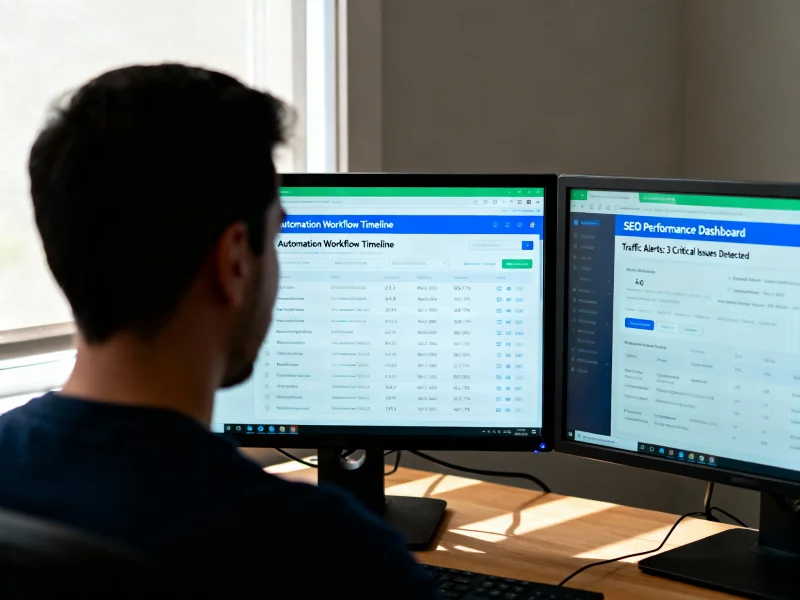Local Seo: A Step-By-Step Guide For Small Businesses
Search engine optimization (SEO) has become an essential part of any business's online presence, and local SEO is no exception. Local SEO aims to improve the visibility of a small business in search engine results pages for geographically related searches. As more consumers are searching for products and services near them, it becomes increasingly crucial for businesses to optimize their online presence to capture these potential customers.
Small businesses often struggle with competing against larger corporations with bigger marketing budgets, but local SEO can level the playing field by providing targeted exposure to relevant audiences. This step-by-step guide will outline the key components necessary for implementing successful local SEO strategies for small businesses. By following these guidelines, business owners can enhance their online visibility and attract new customers within their local communities.
Understanding Local Search Algorithms
Local search algorithms have become increasingly important for small businesses that want to reach their local audience. These algorithms are used by search engines like Google to provide users with relevant results based on their location and search query. Understanding how these algorithms work is essential for any business that wants to improve its online visibility and attract more customers.
One of the key factors in local search algorithms is Google Maps integration. This feature allows businesses to create a profile on Google Maps, which appears when users search for related keywords in their area. By optimizing this profile with accurate information about your business, such as your opening hours, contact details and reviews, you can increase your chances of appearing in local search results.
Another factor that affects local search rankings is being listed in local business directories. These directories act as an online yellow pages, providing users with a comprehensive list of businesses in their area. By getting listed on these directories, you can increase your online exposure and drive traffic to your website or physical store. However, it's important to ensure that all information provided is correct and up-to-date, as inaccurate data could harm your business's reputation and lower your ranking score.
By understanding these two factors - Google Maps integration and Local Business Directories - you can begin improving your business's online presence through effective SEO strategies. With proper optimization techniques tailored specifically for local searches, small businesses can compete effectively against larger companies within their niche while attracting new customers who are seeking products or services nearby without breaking the bank on expensive marketing campaigns.
Claiming And Optimizing Your Google My Business Listing
- Claiming your Google My Business listing is an important step for small businesses to gain visibility in local search engine results.
- The process involves verifying ownership of the listing and providing accurate information about the business.
- Optimizing your Google My Business listing involves including a relevant and descriptive business title, providing accurate contact information, and including images and videos to enhance the listing.
- Additionally, businesses should ensure they have appropriate categories selected and provide detailed descriptions of their products and services.
Claiming Your Listing
Claiming your Google My Business listing is an important step in local SEO. It allows you to become more visible on search results and provides potential customers with valuable information about your business such as hours of operation, website link, phone number, and address. However, claiming your listing is just the first step. Verification is equally crucial because it confirms that you are the owner or authorized representative of the business.
Verification can be done through various methods such as mail, email, phone call or instant verification for eligible businesses. Once verified, optimizing your listing for mobile devices becomes necessary since most people use smartphones to search for local businesses nowadays. Your GMB profile should display clearly on small screens and contain all relevant information about your business including high-quality photos and reviews from satisfied customers.
In conclusion, claiming your Google My Business listing and verifying it are essential steps if you want to improve your chances of being found by potential customers online. Optimizing your GMB listing for mobile devices ensures that users have a seamless experience when viewing your profile on their phones or tablets. Remember that having a complete and accurate GMB profile not only boosts your visibility but also helps attract new clients who trust reviews from other happy customers like them.
Optimizing Your Listing
After verifying your Google My Business listing, the next step is optimizing it for search engines and mobile devices. This involves using specific techniques to increase visibility on Google Maps searches and improve user experience when viewing your profile on smartphones. One way of achieving this is by implementing Google Maps optimization strategies such as adding relevant keywords in descriptions, uploading high-quality photos, and encouraging customers to leave reviews.
Another crucial aspect of GMB optimization is ensuring NAP consistency across all online platforms where your business appears. NAP stands for Name, Address, and Phone number - these details should be consistent everywhere they appear online; otherwise, it can negatively affect rankings. For instance, if a user finds different phone numbers or addresses on various sites, they may assume that your business is unreliable or untrustworthy.
In summary, optimizing your Google My Business listing requires a combination of strategies aimed at improving visibility and enhancing user experience. These include Google Maps optimization techniques like keyword research and photo uploads as well as maintaining NAP consistency across all listings. By doing so, you'll ensure that potential customers find accurate information about your business whenever they conduct local searches online.
Building Local Citations And Reviews
As a small business owner, building local citations and reviews is an essential part of your SEO strategy. Local citations are online mentions of your business name, address, and phone number (NAP) on other websites. The more consistent these citations are across the web, the better it is for your local search rankings.
Importance of consistency cannot be stressed enough when it comes to creating local citations. Inaccurate or inconsistent NAP details can negatively impact your local SEO efforts by confusing search engines and potential customers alike. You need to ensure that all your listings have the same information about your business so that Google can trust this data as reliable.
Building relationships with customers goes hand in hand with generating positive reviews for your business. Reviews not only help you build credibility but also influence customer decisions about whether they want to do business with you or not. Encourage satisfied customers to leave feedback on platforms like Google My Business, Yelp, Facebook etc., which will improve both your visibility and reputation among potential clients. By providing excellent service, you’re likely to get great reviews naturally from happy clients who appreciate what you offer.
With an effective citation and review strategy in place, you’ll be well on your way towards improving your local SEO rankings. Remember: accuracy and consistency are key when it comes to creating local citations while building lasting relationships with clients through positive reviews enhances brand awareness and helps solidify trust in prospective consumers' eyes.
Creating Localized Content
Creating Localized Content: A Must for Small Businesses
To attract local customers, small businesses need to create content that is relevant and targeted towards their location. Using local keywords in your website's copy can help you rank higher on search engines when people search for services or products in a specific area. This means that if someone types "best pizza place near me" into Google, your business will appear at the top of the results if you've optimized your site with appropriate local keywords.
Another way to reach out to your target audience is by creating geo-targeted advertising campaigns. These ads are designed to specifically target users within a certain geographic radius of your business location. By using platforms like Facebook Ads or Google AdWords, you can create paid advertisements that only appear to those who live within your serviceable area. This ensures that you're not wasting money on clicks from people who are too far away to benefit from your services.
In addition to optimizing your website with local keywords and running geo-targeted ad campaigns, it's important to also create localized content such as blog posts, videos, and social media updates. This type of content should be tailored towards topics that are relevant to the community you serve. For instance, if you run a pet store in San Francisco, consider writing about dog-friendly parks in the city or hosting events at nearby animal shelters. By providing value through this type of content marketing, you'll establish yourself as an authority figure in the eyes of potential customers and build trust over time.
By incorporating these tactics into your overall SEO strategy, small businesses can increase their visibility online and attract more foot traffic from their surrounding communities. It takes time and effort to craft effective localized content but doing so will pay dividends down the road as consumers become more aware of what makes your business unique and valuable.
Tracking And Analyzing Your Local Seo Success
Tracking and analyzing your local SEO success is crucial in ensuring that your efforts are paying off. By monitoring key metrics, you can identify areas that need improvement and adjust your strategies accordingly. In this section, we will discuss the importance of keyword research and competitor analysis in tracking your progress.
Keyword research is one of the most important steps in any SEO strategy. It involves identifying the terms and phrases that people use to search for products or services related to your business. By understanding what keywords are relevant to your target audience, you can optimize your website content and improve its visibility on search engines. There are many tools available for conducting keyword research, such as Google Keyword Planner and SEMrush.
Competitor analysis is another essential aspect of tracking your local SEO success. By analyzing what your competitors are doing, you can gain valuable insights into their strengths and weaknesses. This information can help you identify opportunities to differentiate yourself from the competition and develop unique selling points. Some key metrics to consider when analyzing competitors include their ranking positions, backlink profiles, social media presence, and online reviews.
In conclusion, tracking and analyzing your local SEO success requires a combination of keyword research and competitor analysis. These two strategies provide critical insights into how well your website is performing relative to others in your industry. By staying up-to-date with these metrics, small businesses can make informed decisions about where to focus their marketing efforts for maximum impact on customer acquisition rates.
Frequently Asked Questions
How Do I Determine The Best Local Keywords To Target For My Business?
Keyword research and competitor analysis are two essential steps in determining the best local keywords to target for your business. Keyword research involves identifying search terms that potential customers use when looking for products or services like yours, while competitor analysis helps you understand which keywords your competitors are using and how they are ranking for those keywords. To conduct effective keyword research, start by brainstorming a list of relevant topics and phrases related to your business. Then, use tools such as Google Keyword Planner or SEMrush to identify high-volume, low-competition keywords that align with your business goals. Next, analyze your competitors' websites and online presence to see which keywords they are targeting and how successful they have been in ranking for those keywords. This information can help you refine your own keyword strategy and improve your chances of reaching the right audience with your content.
Is It Necessary To Have A Physical Storefront To Benefit From Local Seo?
Digital businesses that operate without a physical storefront may still benefit from local SEO through virtual optimization techniques. While having a physical location can provide the advantage of appearing in Google's Local Pack, digital businesses can optimize their online presence by targeting relevant keywords based on their industry and target audience. This includes optimizing website content, creating listings on local directories and review sites, and ensuring consistent NAP (name, address, phone number) information across all platforms. Additionally, building backlinks from reputable sources and utilizing social media channels can further improve visibility in local search results. By implementing these strategies, digital businesses can increase their chances of being found by potential customers seeking products or services within their area of operation.
Can Social Media Activity Impact My Local Search Rankings?
Social media engagement and online reviews have become increasingly important factors in determining local search rankings. While Google has not confirmed the exact weight of these factors, studies have shown a correlation between high social media activity and improved search visibility. This is because social signals, such as likes, shares, and comments on platforms like Facebook and Instagram, can indicate to search engines that a business is active and engaged with its audience. Additionally, positive online reviews can also boost a business's ranking by serving as an indicator of trustworthiness and quality. As such, it is recommended for small businesses to prioritize their social media strategy and encourage customers to leave reviews online.
How Long Does It Typically Take To See Results From Local Seo Efforts?
The timeline for seeing results from local SEO efforts is dependent on several factors. One of these factors is the level of competition in the industry and location. The more competitive a market, the longer it may take to see noticeable improvements. Another factor affecting local SEO timeline is the consistency and quality of information provided across different online directories and platforms. Thus, importance should be given to building accurate and complete citations across relevant websites. Typically, businesses can expect to see some improvement within three to six months after implementing local SEO strategies consistently. However, significant changes may take up to a year or more depending on various circumstances such as budget allocation, content marketing strategy, and website design optimization.
Are There Any Penalties Or Consequences For Using Black Hat Seo Tactics In Local Search Optimization?
It is important to understand the consequences of using black hat SEO tactics in any type of search optimization, including local. These unethical practices can lead to penalties from search engines, such as lower rankings or even being completely removed from search results. Building trust through ethical SEO practices and reputation management is crucial for long-term success in local search optimization. It may take longer to see results with white hat techniques, but they will ultimately result in a stronger online presence that can withstand algorithm updates and changes. Therefore, it is recommended for small businesses to prioritize building a solid foundation of trustworthy SEO practices rather than risking potential penalties by resorting to black hat tactics.
Conclusion
Local SEO is an essential strategy for small businesses to rank well in local search results. By optimizing your website and online presence, you can increase visibility, attract more customers, and ultimately grow your business. The first step is to determine which keywords are most relevant to your target audience and optimize your website accordingly.
It’s important to note that having a physical storefront isn’t necessary to benefit from local SEO. You can still optimize your website with location-based keywords, create Google My Business listings, and engage with customers on social media platforms like Facebook and Instagram. Social media activity can also impact local search rankings by increasing engagement, building brand awareness, and improving customer reviews.
While there is no set timeline for seeing results from local SEO efforts, it typically takes several months to see significant improvements in search rankings. It’s important to stay patient, monitor progress regularly, and adjust strategies as needed. However, using black hat SEO tactics such as keyword stuffing or buying backlinks can result in harsh penalties from search engines and damage the reputation of your business. Ultimately, following best practices for local SEO will help improve visibility, drive traffic to your site, and increase revenue for your small business.









